Greenhouse lamps: which ones to choose?
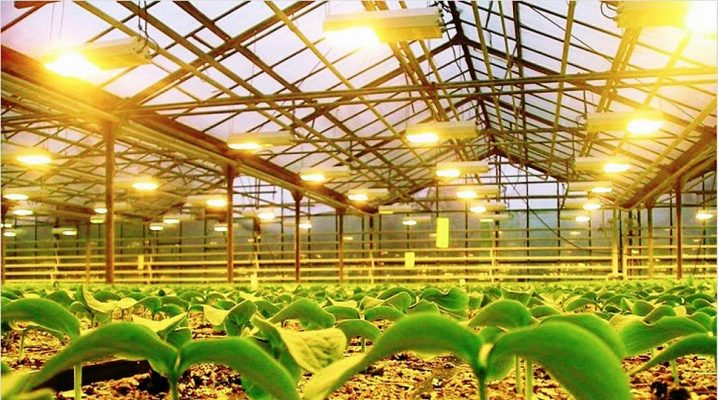
Currently, a large number of people are engaged in the cultivation of vegetables and fruits on their personal plots. Not all regions have a climate suitable for growing plants all year round, so many gardeners build special greenhouses and hotbeds and equip this structure with heating.
In addition to heating and watering the greenhouse, it is necessary to ensure proper lighting of the room. It is very important to make up for the deficiency of UV rays in plants. In cold and gloomy seasons, seedlings need additional illumination necessary for proper growth, flowering and fruiting. The purchase and installation of special lamps should be approached deliberately, carefully weighing and studying all the nuances and subtleties of the correct lighting of greenhouses.
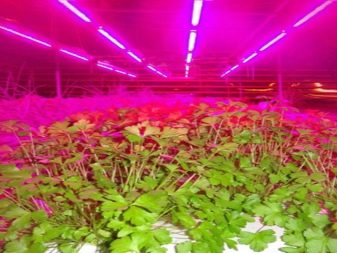


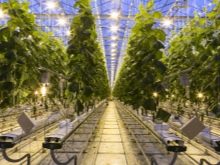
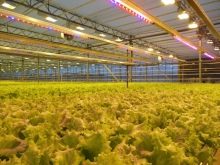
Views
When installing special luminaires in the greenhouse, all the necessary requirements must be observed. Lamps must be positioned so as not to block the sunlight entering the room, so as not to deprive the plants of natural light. You should also monitor the cleanliness of the greenhouse cover to ensure maximum penetration of sunlight into the room.
When choosing lighting devices, you need to pay attention to the material from which they are made. The most practical, durable and safe metal products. Another important factor is the main characteristics of the luminaires.
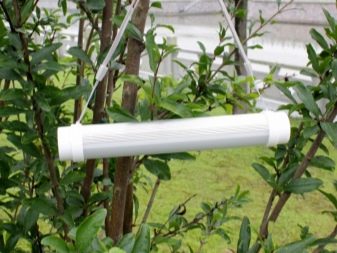
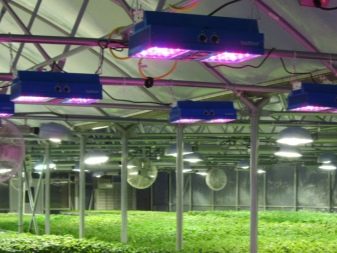
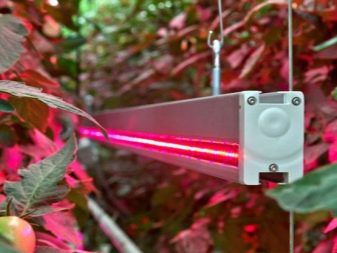
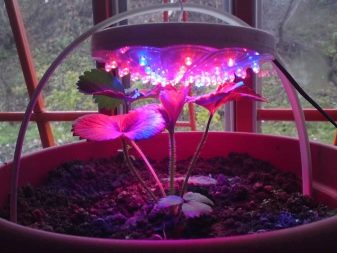
Therefore, when choosing lamps, you need to pay attention to some important nuances:
- First of all, when buying lamps, you should find out who is the manufacturer of this product. The lamp should be purchased from a trusted manufacturer. This is a guarantee of the high quality of the selected products.
- The power of the lamp is of great importance.
- An important criterion when choosing a luminaire is the indicator of the amount of emitted lamp energy.
- Light emission spectrum of the luminaire.
In order to choose the right lamps for plant illumination that are suitable in all parameters, you need to carefully study the properties of each type of product:

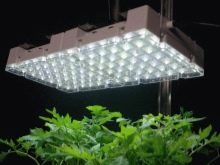

Incandescent lamps
This model of light products emits a red range of light that is not suitable for most crops. The advantages of such lamps include the low cost of products.
The use of these lamps for additional illumination of seedlings has a lot of negative points:
- The light spectrum emitted by incandescent lamps has a detrimental effect on plants, causing deformation of the stem and leaves. The seedlings slow down and then completely stop their growth.
- With prolonged use, the lamp gets very hot, sometimes because of this, burns are formed on the leaves and stems of plants.
- The use of this type of luminaire leads to significant financial costs, since electricity consumption increases significantly.

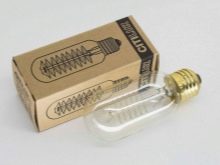
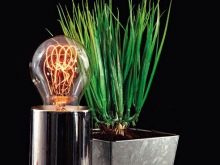
Luminescent
The optimal and profitable option for lighting fixtures. Fluorescent lamps consume a fairly small amount of electricity and are suitable for use in greenhouses with additional illumination of seedlings.
When choosing these luminaires, it is necessary to take into account some characteristics:
- Fluorescent lamps emit cool white light and are a popular and affordable lighting option for backlighting seedlings.
- Such models of lighting devices are very popular and in demand, the cost of these products is slightly higher, since the radiation is very useful for individual plants.
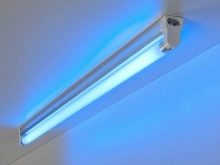

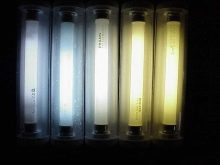
- To achieve the maximum effect, it is more advisable to use different lamps that emit warm and cold white light in the same lighting device at the same time. This option will significantly save finances and will be as useful as possible for plants.
- A wide range of different lighting devices is presented in specialized retail outlets. Among this variety, you can find carefully designed devices with the right radiation for maximum benefits for plants and can significantly reduce energy costs. Lamps are aimed at stimulating plant growth and development, as well as increasing yields.
Lighting devices can be installed both vertically and horizontally.
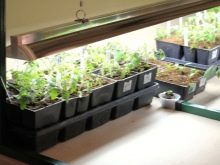

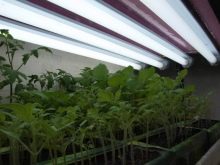
Sodium
The advantage and advantage of this type of lamp is its excellent light output. The spectrum emitted by sodium lamps is unpleasant for human eyes, but it is most useful for seedlings, so these lighting devices are widely used for additional illumination of plants in greenhouses.
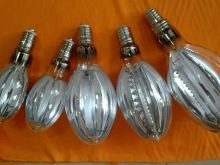
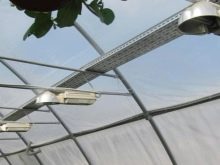
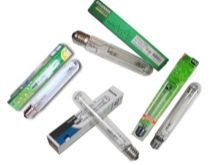
Sodium lamps have many benefits:
- differ in affordable cost and economy;
- lamps are durable and have a long service life;
- have excellent light and heat output, so you can significantly save on heating the greenhouse in the cold season;
- emit a red-orange spectrum useful for the growth, strengthening and fruiting of plants;
- The efficiency of such a luminaire is about 30%.
The disadvantage of these lighting devices is strong heating, so they are very unsafe for plants.
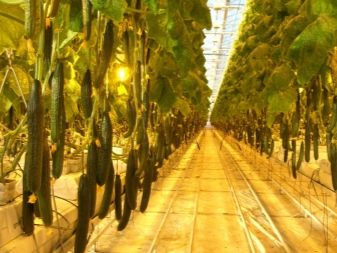
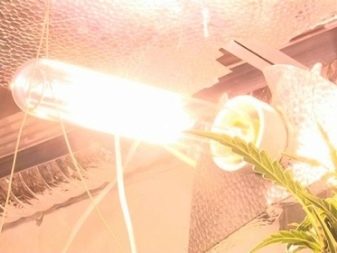
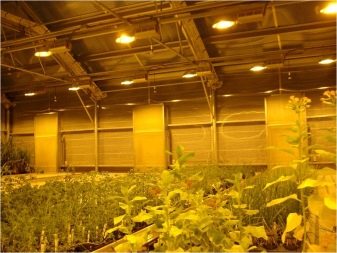
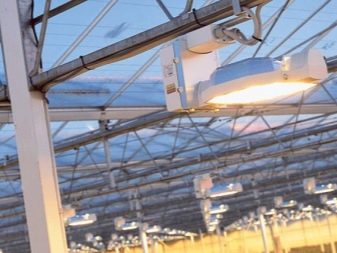
Mercury
This type of lamp is most suitable for lighting greenhouses in the cold season. In the presence of the positive properties of mercury lamps, there is one big drawback - the products use a component dangerous to humans - mercury.
Disposal of a damaged mercury lamp is a rather complicated process, which is why lamps are not popular among gardeners.
The advantages of mercury lamps include the compact size of the product. Radiation has a positive effect on plant growth and development. In some cases, when the seedlings have outgrown and special lighting and heating are required to normalize growth and development, the use of mercury lamps would be the best solution. Lamps get very hot and emit a huge amount of ultraviolet radiation.
If the lamp is damaged and mercury spills, it is necessary to dispose of all plants and objects that have gotten this component. Therefore, you should be extremely careful with these lighting devices.

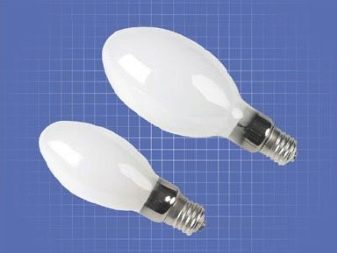
Metal halide
This type of lighting products is distinguished by its high cost and short service life. The emission spectrum of such lamps is most suitable for plant illumination. The distinctive features of the MGL are its compact size and excellent light output. The disadvantages include the high cost, the dependence of the quality of lighting on the voltage of the mains, a high probability of the lamp exploding with strong heating.
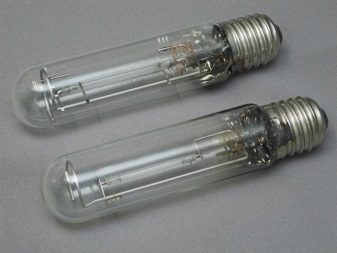
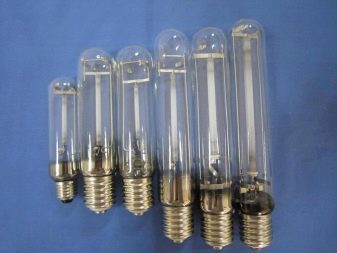
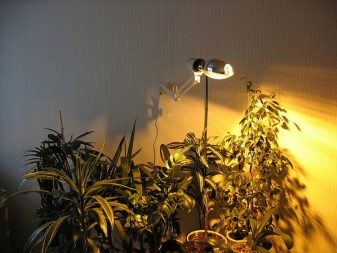
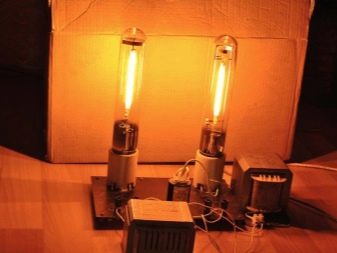
LED
This type of lamp is perfect for lighting greenhouses and seedlings at home.
The advantages of LED lamps far outweigh the advantages of other types of luminaires:
- LED bulbs are durable. When choosing a product from leading manufacturers, a service life of about twenty years is guaranteed.
- Economical. LED bulbs consume a fairly small amount of electricity.
- The lamps are absolutely safe for plants.The surface of LED lamps does not heat up, which eliminates the likelihood of burn centers on the leaves and stems of plants.
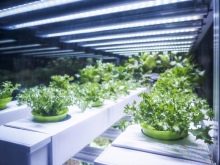
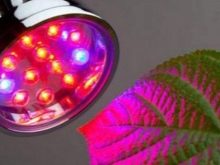
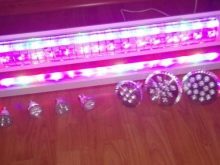
- The radiation of these lamps has the maximum positive effect on the growth, development and further fruiting of plants.
- They are highly resistant to temperature extremes and high humidity.
The durability of LED lamps and significant energy savings allow you to recoup all the costs of lighting the greenhouse and installing these lighting fixtures.

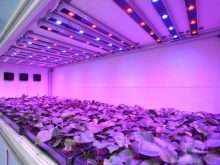
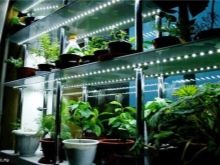
Infrared
This type of lighting products has found wide application not only for lighting, but also for heating greenhouses. Infrared models of lighting devices have a beneficial effect on the growth and development of seedlings, help to create conditions similar to the natural environment. For maximum convenience and indoor climate control, the models are equipped with special controls. Infrared heating first warms up the plant and the ground, then begins heating the air in the greenhouse.
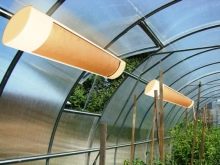
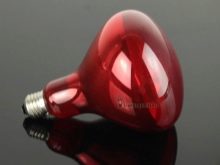
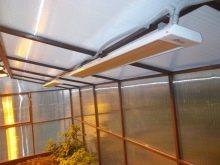
For these products, you can use phytolamps, daylight bulbs, LED, pulsed lighting and induction options. It is worth noting that the DRV is much worse than the DRL in terms of its luminous efficacy. Today, automation is quite popular, heating the soil like the sun.
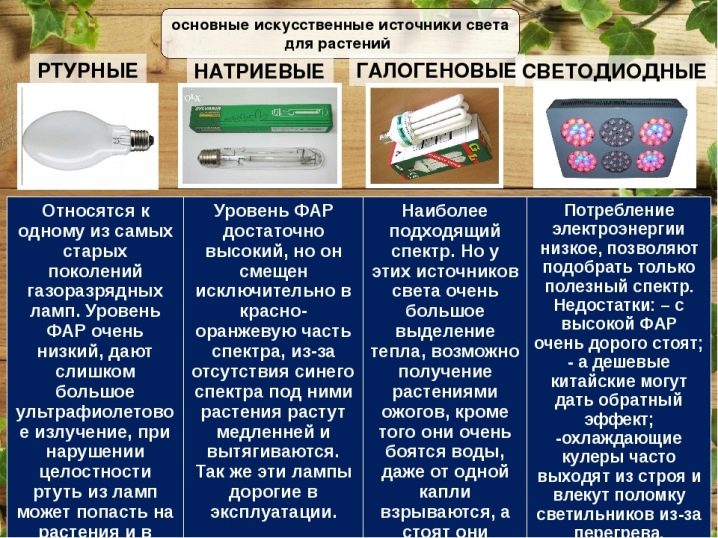
How to calculate the brightness of lighting in a greenhouse?
When building and installing lighting fixtures in a greenhouse with your own hands, you need to correctly calculate the required number of lamps to illuminate the room, in this case, some parameters should be taken into account:
- at what height above the plants should the lamps be located for optimal lighting;
- power and type of lamps used;
- it is important to take into account the type of plant, since each crop requires a different intensity of illumination;
- an important role in the calculation is played by the area that needs to be illuminated;
- the time of the year when additional illumination of plants in the greenhouse will be made.
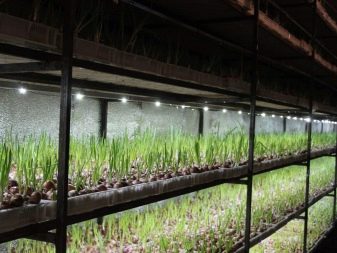
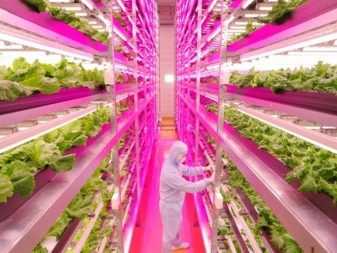
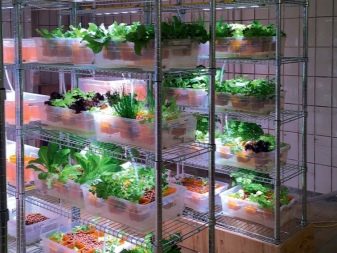

There are certain agronomic lighting standards for growing plants. Therefore, the calculation of the intensity and duration of lighting is carried out taking into account these standards. For example, in the winter season, plants need much more additional lighting due to the lack of natural light. In spring and autumn, the intensity and duration of the backlight can be reduced.
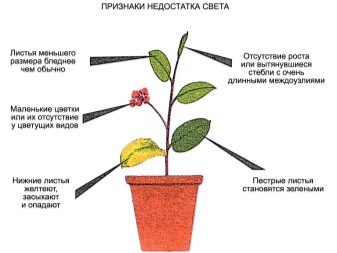
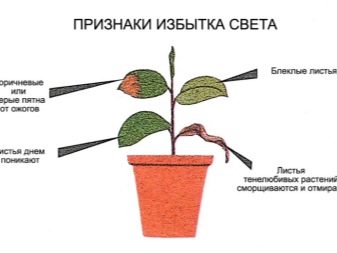
In order to save and reduce the cost of consumed electricity, it is necessary to equip the greenhouse area around the perimeter with special reflectors. To ensure the minimum standard of lighting in the greenhouse, you can use special lamps with a power of no more than 100 W per square meter. The required number of lamps is individual for each greenhouse.
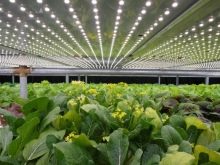
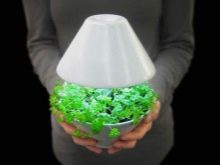
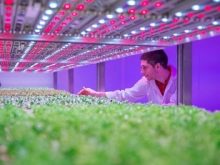
Correct backlight
Every culture needs a certain type of lighting. The intensity and duration of illumination is also highly individual. For cucumbers, for example, it is necessary to create special greenhouse conditions. For this in winter, LEDs are suitable. Therefore, when planning additional lighting for a room, it is necessary to take into account all the smallest nuances and needs of plants.
It should be noted that even with the availability of modern latest technologies, there are no lamps that can emit light that is absolutely identical to natural ultraviolet light.
Therefore, in order to achieve the most effective lighting that brings real benefits to plants, you should use lighting devices with a combination of lamps that emit a different spectrum of light.
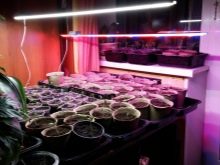
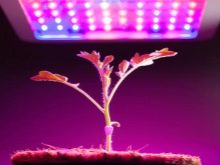
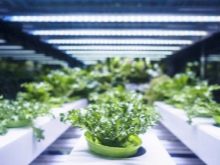
Lamps emitting blue and violet rays have a positive effect on the growth and strengthening of seedlings. Lamps emitting red and orange rays should be used to illuminate plants during flowering, this will have a positive effect on seedlings and help increase yields.UV light fixtures contribute to the overall strengthening of the plant and increase its resistance to cold.
Do not use luminaires that emit green and yellow rays. This radiation has a depressing effect on plants. They die in most cases.

Undoubtedly, natural sunlight is more familiar and useful for different cultures and no, even the highest quality artificial lighting can replace it. But not always, especially in the cold season, the plants have enough ultraviolet radiation. Therefore, it is very important to use different lighting fixtures for additional illumination of the plants.
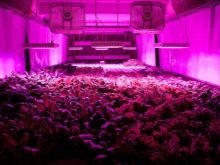
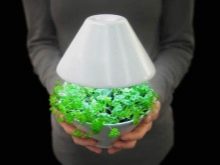
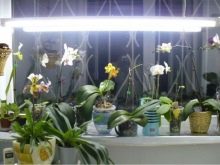
To create the most comfortable conditions for seedlings, you should remember some rules:
- additional illumination of seedlings is used only in order to extend the daylight hours indoors;
- the duration of the backlight varies from ten to sixteen hours a day;
- Lighting of plants for twenty-four hours is strictly prohibited - this leads to exhaustion and cessation of plant growth and development.
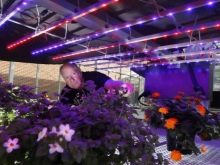
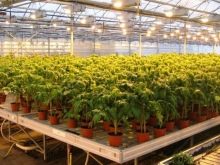
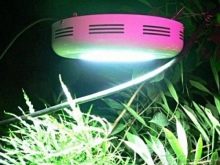
Helpful tips from the pros
You can conduct electricity and install lighting devices in the greenhouse yourself. The main thing is to comply with all the necessary safety requirements and rules. A special cable to the greenhouse can be run in two ways: by stretching it between the supports and underground in a trench.
The first method involves the use of special supports. Pillars are used in their capacity. To prevent the electrical cable from sagging between the supports, it should be secured with a stretched thick wire.
For electrical wiring underground, use a special screened cable. Inside the greenhouse, for maximum safety, it is advisable to use an electrical cable with grounding.

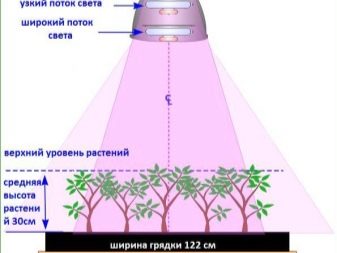
To avoid mechanical damage, when laying electrical wiring inside the greenhouse, it is better to use a special corrugation designed specifically for this purpose.
The switchboard must be equipped with a special cut-off switch. This is necessary to quickly de-energize the entire line in the event of an emergency.
All cable connections must be made carefully to avoid short circuits. It is more expedient to use special connecting blocks for this. After that, you need to insulate all wire connections with high quality and with special care.
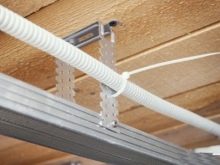
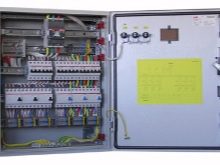

When purchasing lighting devices for additional illumination of seedlings in greenhouses, you need to pay attention to the material from which they are made. This is very important, as the lighting fixtures must be well protected from moisture.
The installation of electrical wiring in the greenhouse must be carried out in compliance with all measures and fire safety rules.
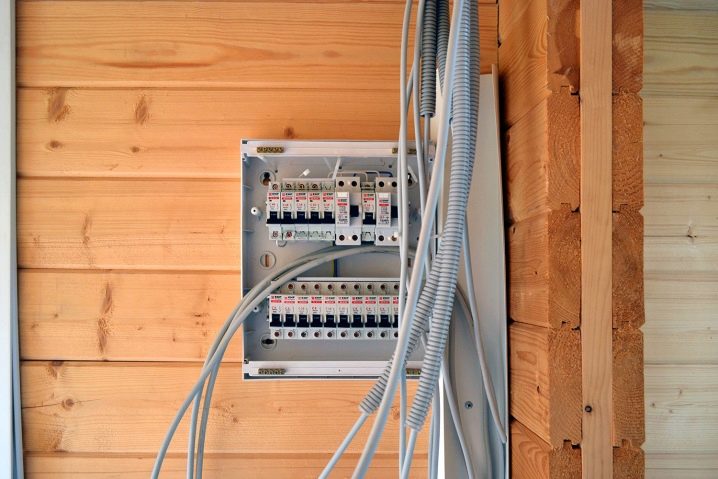
You can learn more about organizing lighting in a greenhouse from the video.





























































The comment was sent successfully.